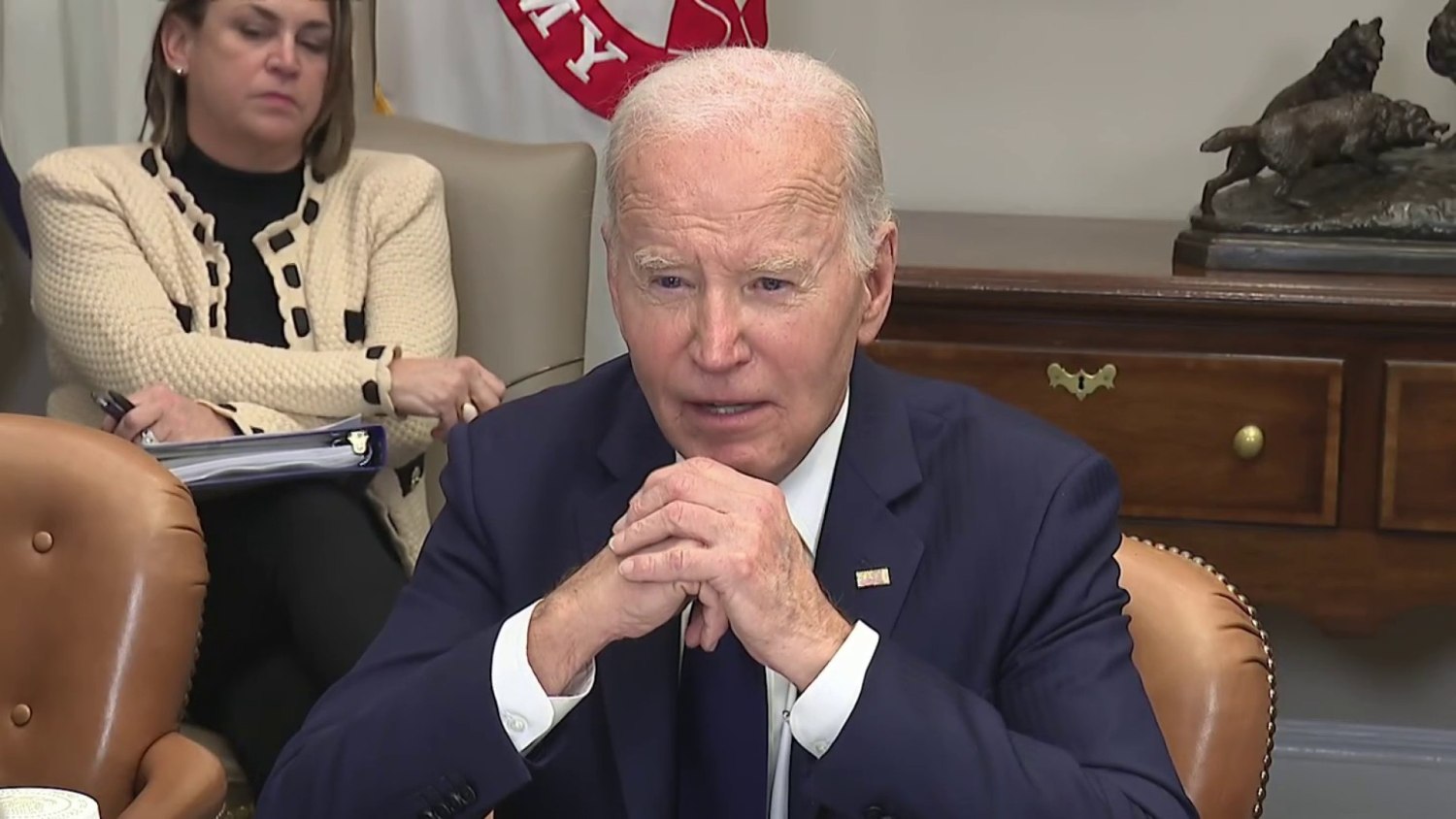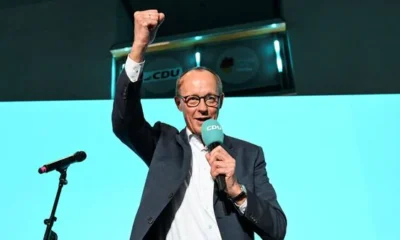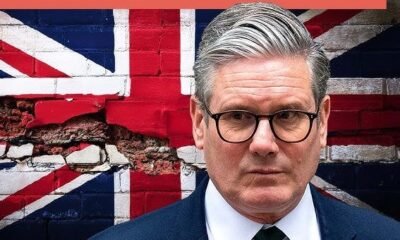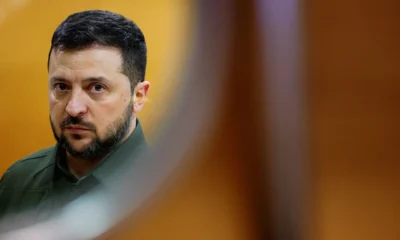Climate Journalism
LA Burnt: War Of Words Between Trump And Biden Administration, Fire Hydrants Ran Out Of Water, And The Collateral Damage-$57 Billion In Damages. Who Is Responsible For The Inferno?
Published
9 months agoon

LA, Southern California is witnessing its most devastating winter fires in over four decades. Fires, which typically rage in the summer, have blazed with ferocity this winter, defying seasonal norms and catching residents and authorities off guard. The convergence of several factors has turned this event into a catastrophic urban wildfire.
Ingredients for Disaster
Supersized Santa Ana winds, blowing at a staggering 100 mph, have fanned the flames at an unprecedented pace. Combined with extreme drought conditions and weather whiplash — which led to lush vegetation growth during downpours only for it to dry out in record high temperatures — the fires found a vast supply of easy-to-burn fuel. An unusual plunging jet stream and flapping power lines further contributed to this lethal mix.
Experts believe these elements transformed the wildfires into a deadly urban conflagration. University of Colorado fire scientist Jennifer Balch noted the alarming trend in wildfire behavior, noting, “Fires have gotten faster. The big culprit we’re suspecting is a warming climate that’s making it easier to burn fuels when conditions are just right.”
Her recent study, published in Science, analyzed 60,000 fires since 2001 and found that the fastest-growing ones have more than doubled in frequency, causing exponentially more destruction than slower, larger blazes. “Winter fires are much more destructive because they happen much more quickly,” added U.S. Geological Survey fire scientist Jon Keeley.
The Collateral Damage
AccuWeather has estimated the damages from the latest fires could reach $57 billion, potentially making it the worst wildfire in modern California history. Jonathan Porter, AccuWeather’s chief meteorologist, noted the sheer scale of destruction, from the number of structures burned to the economic loss incurred. Entire neighborhoods have been reduced to ashes, leaving thousands homeless and livelihoods in ruins.
Political Bickering and Misinformation
As Southern California continues to burn, a war of words has erupted between the Trump and Biden administrations. Former President Donald Trump has accused California Governor Gavin Newsom of mismanaging water resources, suggesting that environmental policies favoring wildlife over firefighting capabilities have exacerbated the crisis. Experts have debunked these claims, emphasizing that current water management practices have little to do with the fires.
Adding fuel to the political fire, Elon Musk has criticized Los Angeles Fire Department’s focus on diversity initiatives, claiming it detracted from preparedness efforts. Such statements have drawn sharp criticism for diverting attention from the root causes, including climate change and outdated infrastructure.
Law and Order Breakdown
Amidst the chaos, troubling videos have emerged on social media. Footage shows individuals throwing gasoline from cars and arson allegations have surfaced, with fires reportedly starting simultaneously in three different locations. These incidents have raised questions about coordinated efforts to intensify the crisis.
Simultaneously, looting has plagued evacuated areas. Reports of thieves ransacking luxury homes abandoned during the fires show a law enforcement vacuum. Residents’ fears have been amplified by the lack of police presence, further straining confidence in the authorities’ ability to manage the crisis.
Social media has played a role in amplifying fear, with unverified claims about widespread arson, looting, and conspiracy theories linking the fires to political or extremist motives.
These rumors have diverted attention from relief efforts and complicated the response by creating mistrust among communities.

Controversy Brews Over DEI Priorities Amid Los Angeles Wildfires
Controversy has also erupted surrounding the leadership of the Los Angeles Fire Department (LAFD) and its focus on diversity, equity, and inclusion (DEI). The city, which has been struggling with massive fires that have displaced thousands, has found itself at the center of a heated debate over the priorities of Fire Chief Kristin Crowley, the first woman and openly gay person to lead the department.
The controversy started gaining traction after media figures, including Megyn Kelly, took aim at the fire chief’s leadership during the crisis. Kelly, in a scathing post, questioned the relevance of Crowley’s sexual orientation during a time when the city was facing devastating fires. “Who gives a flying fig about who she sleeps with?” Kelly asked, emphasizing that the focus should be on managing the fires rather than promoting diversity initiatives.
The remarks sparked backlash from some quarters, with many right-wing pundits and public figures such as Elon Musk chiming in, criticizing the LAFD’s focus on DEI at a time of crisis. Musk, known for his vocal political opinions, shared a post that suggested that the prioritization of diversity could be detracting from the LAFD’s ability to handle the emergency effectively. The criticisms echoed broader concerns about whether DEI efforts are compromising the operational readiness of emergency services.
At the heart of the controversy is the claim that the fire department’s preparedness and response have been hampered by a shift in focus toward inclusivity rather than firefighting tactics. Supporters of this view argue that such initiatives have led to less emphasis on operational efficiency, which they believe should be the primary concern during a crisis like the one unfolding in Los Angeles.
However, others have defended Chief Crowley, arguing that fostering an inclusive work environment is vital to attracting and retaining a diverse and capable workforce. They stress that DEI initiatives do not diminish the department’s core mission of saving lives and protecting the community. Crowley herself responded to the criticism, stating that unity and collaboration would be key to overcoming the crisis. “This is going to be an effort of all of us coming together, and we have to resist any effort to pull us apart,” she said.
Despite the ongoing wildfire crisis, the debate over the LAFD’s leadership has extended beyond the immediate emergency. The focus on diversity and inclusion has become a polarizing issue, with some seeing it as a necessary step toward equality and others viewing it as a distraction from public safety. As the fires rage on and Los Angeles struggles to recover, this controversy is only adding fuel to an already volatile political and social climate.
While Chief Crowley and Mayor Karen Bass have both defended their responses, including maintaining constant communication with officials while abroad, critics argue that such controversies are only adding to the city’s challenges in managing this devastating disaster.

The Mayor Under The Lens
Likewise, Los Angeles Mayor Karen Bass is also facing backlash for being out of the country when devastating wildfires tore through the city on Tuesday night, destroying thousands of homes and displacing residents.
Bass was in Ghana at the time, attending the inauguration of the country’s new president as part of the U.S. delegation. She also met with Ghana’s first female vice president. She returned to Los Angeles late Wednesday afternoon, just as the fires worsened.
Her absence during such a critical time raised eyebrows, with many questioning her leadership. Political critics, including tech billionaire Elon Musk, slammed her for neglecting her duties amid the emergency. Musk called her “utterly incompetent” and shared posts implying she was only hired due to diversity quotas.
Rick Caruso, the billionaire developer and former Republican who narrowly lost to Bass in the 2022 mayoral race, also condemned her absence, saying it contributed to the delayed response. “We have a mayor who seems to be more concerned about being at some party, wherever that is,” Caruso stated.
In response, Bass defended her actions in a Wednesday evening press conference, insisting she was in constant communication with fire commanders and other key officials while abroad. “Although I wasn’t physically here, I was in touch with many of the individuals standing here throughout the entire time,” she said. She also emphasized that she took the “fastest route back,” which included both military and commercial flights, and stayed in contact with officials every hour during her journey.
The wildfires, which began in the Palisades area, quickly spread to more than 17,200 acres, making them the most destructive in the city’s history. As of this morning, at least seven people had died, and more than 100,000 people were under mandatory evacuation orders.
Amid the chaos, questions also emerged about the city’s preparedness for such an event. Some, including Los Angeles Times owner Patrick Soon-Shiong, accused Bass of slashing the fire department’s budget before the fires. However, Politico reported that the city’s fire budget had actually increased by over $50 million compared to the previous year, with additional funding for the department set aside in a separate fund during contract negotiations.
Karen Bass, who made history as Los Angeles’ first female mayor when she was sworn in December 2022, has earned strong support from Democrats but has also drawn sharp criticism from conservatives. Prior to becoming mayor, she served six terms in Congress and was a key figure during the 2020 presidential election, even being considered for Vice President before Joe Biden chose Kamala Harris. In 2024, Bass was invited to speak at the Democratic National Convention.

Trump Spews More Fire
As catastrophic wildfires continue to devastate Los Angeles, President-elect Donald Trump isn’t holding back with his criticism. Rather than offering sympathy, Trump has claimed he could manage the crisis better, spreading misinformation and placing blame on California’s Democratic Governor Gavin Newsom.
Trump has taken aim at Newsom’s forest management policies, making false claims that the state’s fish conservation efforts are to blame for fire hydrants running dry in urban areas. Using a derogatory nickname for the governor, Trump called for Newsom to resign.
While the Trump-Newsom clash is no surprise — the liberal governor has long been a target of Trump’s ire — the fires only illustrate a much deeper issue – the growing intensity of wildfire season, driven by climate change, drought, and rising heat. Trump continues to downplay the environmental crisis, instead blaming natural disasters on political opponents or divine intervention. His proposed solution? Drill for more oil and cut back on renewable energy.
On Thursday, Trump took to social media, demanding Newsom “open up the water main” — an overly simplistic solution to a complex issue. “NO MORE EXCUSES FROM THIS INCOMPETENT GOVERNOR,” Trump raged, adding, “IT’S ALREADY FAR TOO LATE!”
In a fiery response, Newsom, standing on a street in a charred subdivision as a home burned behind him, addressed Trump’s comments “People are literally fleeing. People have lost their lives. Kids lost their schools. Families completely torn asunder. Churches burned down, and this guy wants to politicize it,” Newsom said. “I have a lot of thoughts and I know what I want to say, but I won’t.”
In a post on his Truth Social media platform, Donald Trump attempted to link dry hydrants in Los Angeles to the ongoing debate over California’s water distribution policies. He criticized the state’s approach to balancing water needs between farms, cities, and the protection of endangered species like the Delta smelt. Trump has long sided with farmers in this dispute, but his comments miss the mark when it comes to the hydrant issue, which is tied to the overwhelming demand on a municipal water system not built to handle such large-scale fires.
Trump, hosting Republican governors at his Mar-a-Lago club in Florida on Thursday night, suggested that if he were in office, he would push California to change its water policies. “We’re gonna force that upon him now,” Trump said, referring to California Governor Gavin Newsom. “But it’s very late because I think it’s one of the great catastrophes in the history of our nation.”
About 40% of Los Angeles’ water comes from state-controlled projects connected to northern California, but this year, the state has limited its water deliveries. However, southern California reservoirs that feed these canals are actually above average for this time of year. During the fires, roughly 20% of the city’s hydrants ran dry, as crews struggled to fight the blazes. Los Angeles Mayor Karen Bass confirmed the issue, noting the extraordinary demands placed on the system.
Firefighters in Southern California are used to the powerful Santa Ana winds that often fuel wildfires in the fall and winter. But this week, hurricane-force gusts took them by surprise, grounding firefighting aircraft that were crucial for water drops. This added strain to the already stretched hydrant system.
“This is unlike anything I’ve seen in my 25 years on the fire department,” said Los Angeles Fire Capt. Adam VanGerpen.
Janisse Quiñones, head of the Los Angeles Department of Water and Power, explained that the ferocity of the fires increased the water demand by four times the usual amount. Hydrants are typically designed to handle fires in one or two houses at a time, not hundreds. Refilling the tanks also requires firefighters to pause their efforts.

Meanwhile, President Joe Biden, who had been in California for an environmental event that was canceled due to the fires, joined Newsom at a Santa Monica firehouse on Wednesday. On Thursday, without directly naming Trump, Biden addressed the issue of dry hydrants, offering a straightforward explanation. “In crisis, rumors and fear spread very quickly,” Biden said, adding, “There is, in case you haven’t noticed, global warming.” He emphasized that the issue wasn’t about politics but about providing people with a sense of security.
“Climate change is real,” President Biden stated firmly as he addressed the devastating wildfires ravaging California. In response, he swiftly declared a major disaster in the state, releasing federal funds for immediate aid and approving 100% federal funding for the next 180 days.
Meanwhile, at the Mar-a-Lago meeting, Florida Governor Ron DeSantis, a former rival to Trump in the 2024 GOP presidential primary, defended the president-elect’s approach to emergencies. DeSantis pointed out that Trump had a history of working well with both red and blue states during natural disasters. He also suggested the media was unnecessarily stoking political division between Trump and California Governor Gavin Newsom.
“I worked well with Biden, during his time, with natural disasters, and I worked well with Donald Trump,” DeSantis said, citing hurricanes in Florida and the tragic Surfside condo collapse in 2021. “So, I’m very confident, as a state that knows — we face these — that a Trump administration is going to be very strong and going to be there for the people regardless of party.”
Despite the positive spin from DeSantis, any additional federal response would still be under Trump’s watch, who has a history of withholding or delaying federal aid to punish political foes. In September, Trump threatened to withhold funds for firefighting efforts in California, saying, “We won’t give him money to put out all his fires. And if we don’t give him the money to put out his fires, he’s got problems.”
Trump’s support in California has grown in recent years, and he is increasingly confident in his battles with Democratic leaders in the state. In 2024, he increased his vote share in Los Angeles and the surrounding areas affected by the fires by 4.68 percentage points. Although he still lost the state overall, he improved his margin by 4 points compared to 2020.
Trump also spotlighted the damage to California’s luxury real estate, particularly in Beverly Hills. “The biggest homes, some of the most valuable homes in the world, are just destroyed. I don’t even know. You talk about a tax base, if those people leave, you’re going to lose half your tax base of California,” he said, framing the losses as a potential blow to the state’s finances.

The Last Bit
This inferno is not just a natural disaster; it’s a manifestation of broader systemic issues. Aging infrastructure, inadequate firefighting resources, and a warming climate have all played their part. Political squabbles and misinformation have further complicated the response detracting from the urgent need for effective solutions.
As the ashes settle, the $57 billion question, all those who have lost their lives, lost their homes – who will take responsibility for the inferno and ensure such a tragedy doesn’t happen again?
You may like
-


Taiwan’s ‘Historic’ TSMC Deal, A Win Or The End Of Its ‘Silicon Shield’ As China Threatens? A Jittery Taiwan Watches Trump’s Moves On Ukraine, Wondering, Could We Be Next?
-


America And China’s Thirst For Gold In 2025 Is Draining Other Countries’ Reserves; Here’s Why?
-


Germany’s Friedrich Merz’s Big Balancing Act—Trump, Borders & Europe’s Future. Can He Deliver?
-


United Kingdom To Unleash Its ‘Harshest’ Sanctions On Russia Yet—But Will They Bite? How Trouble Is Brewing For Keir Starmer At Home. Shamed For Volunteering British Troops In Ukraine
-


How It’s Not Trump But Vladimir Putin That Europe Is Stinging From: Trump’s U-Turn On Europe, Russia’s Strong Supply Chain—A Formidable Opponent!
-


Is Ukraine Now Stuck In The US-Russia Ecosystem? Could Zelensky Have Made A Deal To Stop The War, Is Trump Right?
